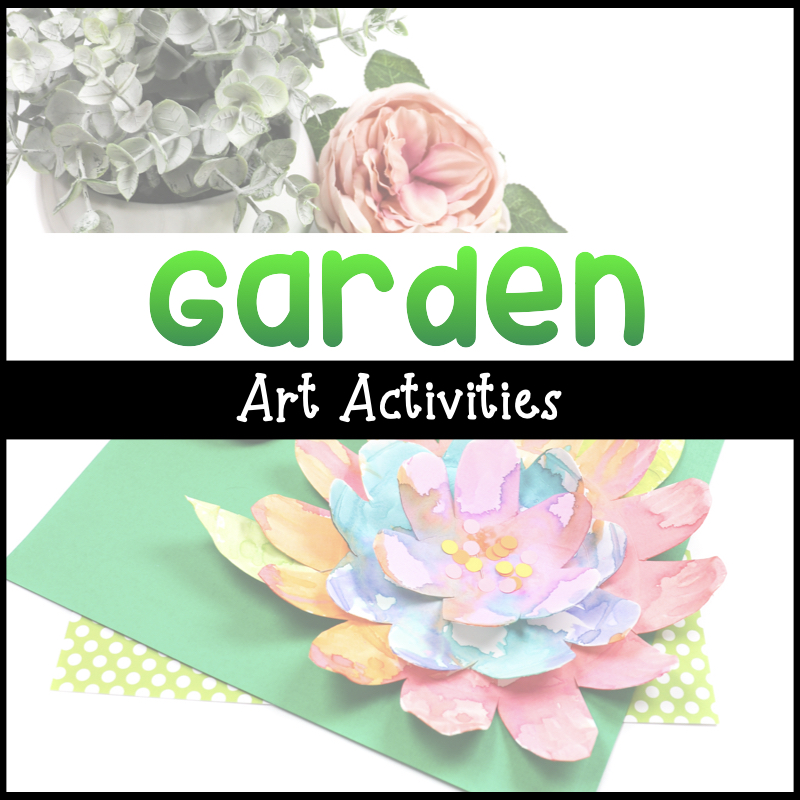Nature contains mathematical wonders and patterns. Rose petals spiral into one another, symmetrical leaves unfold in the spring, and daisies blossom a certain number of petals. As we step into the gardening theme, we can appreciate the mathematical beauty of nature as we explore foundational skills for our preschoolers. Here are some garden math activities for preschoolers to help grow their little minds.
This post contains Amazon affiliate links, which means I earn a small commission from qualifying purchases at no extra cost to you by linking to Amazon.com. See the full disclosure here.
Garden Lesson Plans

tulip tally Number hunt
Garden Math Activities for Preschoolers
My husband likes grass in the yard. Grass. Period. He would rather not have bushes or pine needles or leaves from maple trees or anything other than his precious grass. (Imagine Smeagol from Lord of the Rings stroking the grass and saying, “My precious.”)
So when tulips popped up in the corner of his precious grass, all he wanted to do was get rid of them. In fact, he mercilessly mowed over them in an attempt to destroy them.
But luckily for me (and the bees), the tulips would pop up year after year, a vibrant surprise of resiliency.
And it will be a vibrant surprise during math centers for your preschoolers to go on a tulip hunt!
Hide the cards around the room (either with dots to count, tally marks, or numerals). When your tots find a vibrant tulip surprise, they will color the matching number on the recording sheet the same color as the one they found.
Materials:
Garden Salad
Counting Garden Sensory Bin
Awkward icebreakers – a mandatory first-day-of-middle-school lesson plan. Teenagers aren’t awkward enough at that age, I guess.
So when our health teacher asked us to turn to our neighbor and reveal our favorite food, I simply stated ice cream, the most delicious and nutritious food, of course.
My neighbor turned to me and said her favorite food was salad, and naturally, I could not hide the disgusted look on my face. We’ve been best friends ever since.
And while salad may not be your favorite food, or your toddler’s, in fact, it is still a healthy way to start a meal or have for a snack.
So let’s encourage some healthy food choices (rather than my favorite ice cream) for our counting sensory bin this week.
Scoop the lettuce (green beads or crinkled green paper) into the bowl, then toss in some red pompom tomatoes, cucumbers, and carrots for a nutritious snack!
Materials:
- Garden Salad Counting Sensory Bin
- green crinkle paper or green beads
- tongs or scoops
- red pompoms
- vegetable counters
- bowls
sunflower life cycle & measure
Non-Standard Measurement
There’s something vibrantly happy about sunflowers. In fact, sunflowers are the only flowers my grandmother likes.
That’s why I chose sunflowers for this engaging, hands-on nonstandard measurement math center.
The variety of sunflowers invites your little learners to use the sunflower seed ruler to measure the height of each flower. Can your preschoolers find the tallest sunflower!?
Materials:
- Sunflower Life Cycle & Measure
- Optional: sunflower seeds in packing tape
Counting Flowers
Garden Math Activities for Preschoolers
Although I prefer flowers to flourish outside in nature, I do love it when my husband brings me flowers. It’s a genuine gesture and always a pleasant surprise!
Fortunately, I have more luck with flowers in a vase than a garden in my backyard.
There’s no need to worry about watering these flowers we use for our fine motor math activity.
Print, add a pipe cleaner stem, and let your toddlers get busy lacing beads onto the pipe cleaner. It’s a two-in-one activity – fine motor skills will be busy as they count the correct number of beads each flower needs!
Materials:
Plant a Pattern
Garden Pattern Activity
A dream of mine: to happily eat a garden salad straight from my backyard.
$700 in lumber later, things started growing, and so did my excitement.
But as the summer came to a close, we ended up with about two carrots and some coriander (I didn’t know that cilantro would do that, people). That brings our total to about $349 per carrot. They were good, but not that good.
I’m just going to stick to King Soopers from now on.
But for a moment, let’s just pretend we grew a fabulous, plentiful garden with this next math activity.
Following the pattern on the cards, plant the vegetables in an egg carton garden and continue the pattern to the end.
Your preschoolers will happily pretend they are gardeners without the coriander of defeated dreams.
Materials:
- Plant a Pattern Cards
- egg cartons
- vegetable counters
You might also like...
MORE Garden Activities for Preschoolers
We hope these garden math activities for preschoolers have inspired your little learners in some of the beautiful patterns of nature. These garden math activities will give children hands-on opportunities to recognize numbers and patterns while having fun with math in our natural world! Together we can unlock the mysteries of nature while diving into great deals of mathematical knowledge!
















